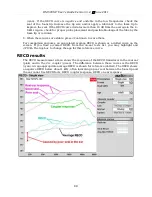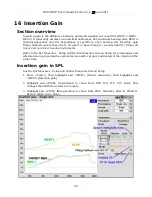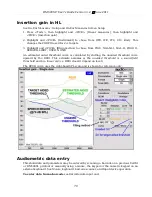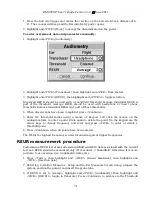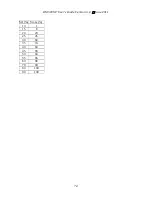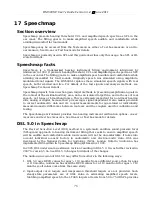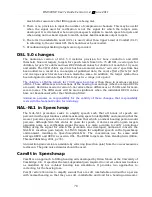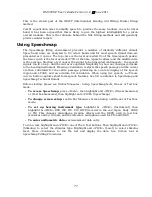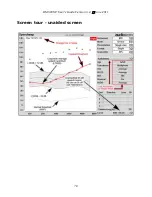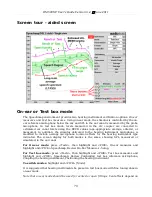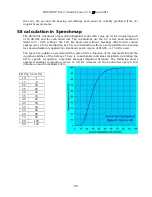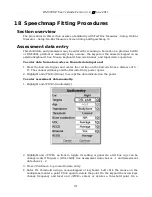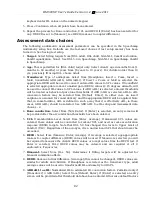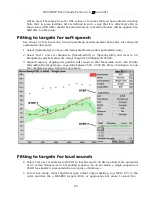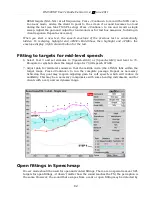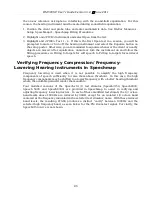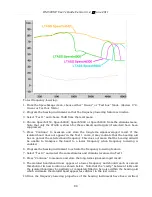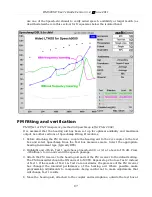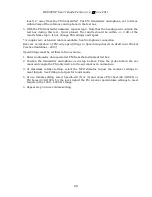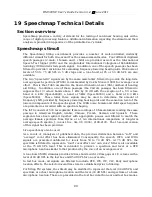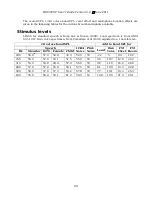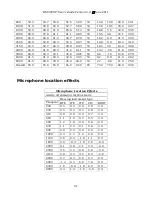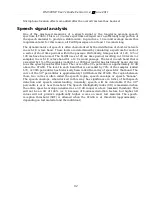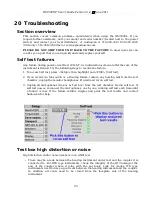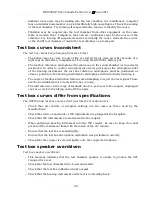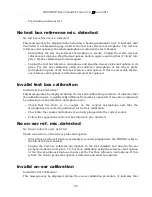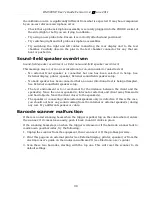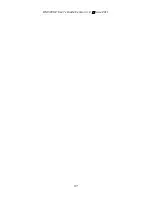
RM500SL
®
User's Guide Version 3.4
June 2011
keyboard enter HL values on the numeric keypad.
5. Press <Continue> when all points have been entered.
6. Repeat the process for Bone conduction, UCL and RECD if [Enter] has been selected for
any. If RECD is set to [Measure], see RECD (real-ear to coupler difference).
Assessment data choices
The following audiometric assessment parameters can be specified in the Speechmap
Audiometry setup box. Defaults are the last-used choices if test setup memory has been
turned on. See Saving test setup.
1.
Target:
Select fitting targets from [DSL adult, DSL child, NAL-NL1, Camfit restoration,
Camfit equalization, None]. See DSL 5.0 in Speechmap, NAL-NL1 in Speechmap, Camfit
in Speechmap.
2.
Age:
This is permitted for [DSL child] target only. Select client’s age in months from [1
months to 60 months] or years from [6 years to 10 years]. For children older than 10
yrs, previously fit using DSL, choose Adult.
3.
Transducer:
Type of audiogram. Select from [Headphone, Insert + Foam, Insert +
Mold, Soundfield, ABR (eHL), ABR (nHL)]. If
Insert + Foam or Mold
is selected, the
appropriate RECD will be used to convert entered HL values to SPL values. If
Soundfield
is selected appropriate real-ear unaided gain (REUG) values @ 45 degrees azimuth, will
be used to convert HL values to SPL values. If
ABR (eHL)
is selected, entered thresholds
will be treated as behavioral pure tone thresholds. If
ABR (nHL)
is selected, nHL to eHL
conversion factors may be selected from [Default, Enter]. In either case, an insert
earphone is assumed for sound delivery and the appropriate RECD will be applied. Note
that, in some facilities, nHL is defined in such a way that it is effectively eHL; in these
cases, ABR (eHL) should be selected. See ABR nHL to eHL setup and Assessment data
choices – 2.
4.
Bone conduction:
Select from [N/A, Enter]. If [Enter] is selected, an entry screen will
be provided after the air conduction thresholds have been entered.
5.
UCL:
Uncomfortable Level. Select from [Enter, Average]. If measured UCL values are
entered, these values will be converted to real-ear SPL and used as real-ear saturation
response (RESR) targets. Note that DSL 5.0 has changed this term to Upper Limit of
Comfort (ULC). Regardless of the acronym, it is a narrow-band SPL that should never be
exceeded.
6.
RECD:
Select from [Measure, Enter, Average]. If Average is selected, age-appropriate
real-ear to coupler difference (RECD) values will be used. If Measure is selected, you will
be required to measure the client’s RECD values or accept values from the RECD test. If
Enter is selected,
HA-2
RECD values may be entered and are required
at all 9
audiometric frequencies
.
7.
Binaural:
Select from [Yes, No]. Determines if fitting targets will be adjusted for
binaural summation effects.
8.
REDD:
Real-ear-to-Dial Difference. [Average] (this cannot be changed). REDD values are
similar for adults and children. If Headphone is selected as the transducer type, adult
average values will be used to transform dB HL audiometry to dB SPL.
9.
ABR nHL to eHL:
Normalized HL to estimated HL conversion factors. Permitted only if
[Transducer] = ABR (nHL). Select from [Default, Enter]. If [Enter] is selected, an entry
screen will be provided after threshold data have been entered. Otherwise default factors
82
Summary of Contents for RM500SL
Page 1: ...RM500SL User s Guide Version 3 4 March 2010...
Page 9: ...RM500SL User s Guide Version 3 4 June 2011 EC Declaration of Conformity 9...
Page 10: ...RM500SL User s Guide Version 3 4 June 2011 10...
Page 37: ...RM500SL User s Guide Version 3 4 June 2011 37...
Page 43: ...RM500SL User s Guide Version 3 4 June 2011 telecoil test 43...
Page 51: ...RM500SL User s Guide Version 3 4 June 2011 51...
Page 57: ...RM500SL User s Guide Version 3 4 June 2011 57...
Page 64: ...RM500SL User s Guide Version 3 4 June 2011 64...
Page 78: ...RM500SL User s Guide Version 3 4 June 2011 Screen tour unaided screen 78...
Page 97: ...RM500SL User s Guide Version 3 4 June 2011 97...
Page 98: ...RM500SL User s Guide Version 3 4 June 2011 98...
Page 99: ...RM500SL User s Guide Version 3 4 June 2011 99...
Page 102: ...RM500SL User s Guide Version 3 4 June 2011 102...
Page 112: ...RM500SL User s Guide Version 3 4 June 2011 112...
Page 113: ...RM500SL User s Guide Version 3 4 June 2011 113...

